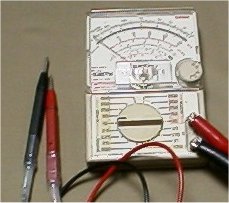
Abstemious little Cindy in the scullery
How to make a warming body


Please imagine how you would feel... When you hold a soft cloth doll having natural warmth. Probably, many people will think that this type of gimmick for a doll is uncanny. However, some doll therapists are saying that they need warming doll. Moreover, since a feeling of warming doll is so peaceful, if once you hold the doll, your negative prejudice disappears from your mind, and you can understand the value of the doll. I think this gimmick (simply warming) is more refined one than a gimmick of some dog toy having gear, motor and micro-computer(for An imitation intelligence).
I have reported about various experiments to make this kind of doll in another page. However, they needed so special technology (even a RISK processor have to be coded). So those pages were not helpful for the people who want to make warming doll. Therefore I decided to describe detailed instruction for the way to make a doll warm on the Cindy's page.
About this theme, I have already tackled for two years or more, and tried many methods. Here, I introduce the the easiest and durable way in them.
In order to simplify structure, she does not perform temperature-control, but always generates only 8W of heat. For this reason, she takes about an hour to stabilize temperature. Moreover, she is felt warmly only in the keeping-warm environment such as bedding etc. In spite of this, this Warming-Cindy makes you experience peacefulness you have never felt before.

Kent paper is...
- As thick as a postcard
- Can pass your printer
- You can use any paper like above


One-time use thermal fuse used in hair dryers, coffee makers and other small appliances. about 1/2" long.(Ex. Microtemp # 4194F)





























































You may use this pattern to make dolls for your personal use or to sell at local craft shows and in limited quantities. However, I do require that you credit Cloth Dolls by doku@newon.org for the design on your hang tag or in any advertising that you do. You may not reproduce this pattern for sale or mass-produce dolls made from this pattern.













































Heaters comes out to the surface where both (left and right) bodies touched.
Insert the heater with the bodkin
To prevent the sifting of heater route, whenever insert with bodkin, sew and fix the heater with thread.
Since left shin is built in a plug, the route of the heater differs from others.
Pass heater immediately under the cloth. So, heater passes between internal fiber and cloth.
connect four heater serially at the black round mark shown in the picture above.
Connection points of heaters are hidden in the closed portion of body.






























- from left leg > front body > exits at front upper of CONTACT-AREA
and
from left arm > fromt body > exits at front upper of CONTACT-AREA- from right leg > front body > exits at front upper of CONTACT-AREA
and
from right arm > fromt body > exits at front upper of CONTACT-AREA- from right arm > back body > exits at back middle of CONTACT-AREA
and
from left arm > back body > exits at back middle of CONTACT-AREA
- from left leg > exit at back lower of CONTACT-AREA
and
from right leg > exit at back lower of CONTACT-AREA









| resistance (ohm) | supply voltage (volt) | number of battery |
|---|---|---|
| 5.0 | 6.3 | 4 |
| 5.5 | 6.6 | 4 |
| 6.0 | 6.9 | 5 |
| 6.5 | 7.2 | 5 |
| 7.0 | 7.5 | 5 |
| 7.5 | 7.7 | 5 |
| 8.0 | 8.0 | 5 |
| 8.5 | 8.2 | 6 |
| 9.0 | 8.5 | 6 |
| 9.5 | 8.7 | 6 |
| 10.0 | 8.9 | 6 |
| 10.5 | 9.2 | 6 |
| 11.0 | 9.4 | 6 |
| 11.5 | 9.6 | 6 |
| 12.0 | 9.8 | 7 |
| 12.5 | 10.0 | 7 |
| 13.0 | 10.2 | 7 |
| 13.5 | 10.4 | 7 |
| 14.0 | 10.6 | 7 |
| 14.5 | 10.8 | 7 |
| 15.0 | 11.0 | 7 |
| 15.5 | 11.1 | 7 |
| 16.0 | 11.3 | 8 |
| 16.5 | 11.5 | 8 |
| 17.0 | 11.7 | 8 |
| 17.5 | 11.8 | 8 |
| 18.0 | 12.0 | 8 |
| 18.5 | 12.2 | 8 |
| 19.0 | 12.3 | 8 |
| 19.5 | 12.5 | 8 |
| 20.0 | 12.6 | 8 |
Supply voltage (v) = SQRT( 8 (w) * resistance (ohm) )









































Thus, heaters are passed immediately under the cloth, that is, heaters passes between fiber and cloth.Then exit bodkin at the entrance hole for heater.


















About DOKU
The "DOKU" does not mean a doctor. "DOKU" originates in the Japanese word "DOKUTOKU", and it means unique and original.